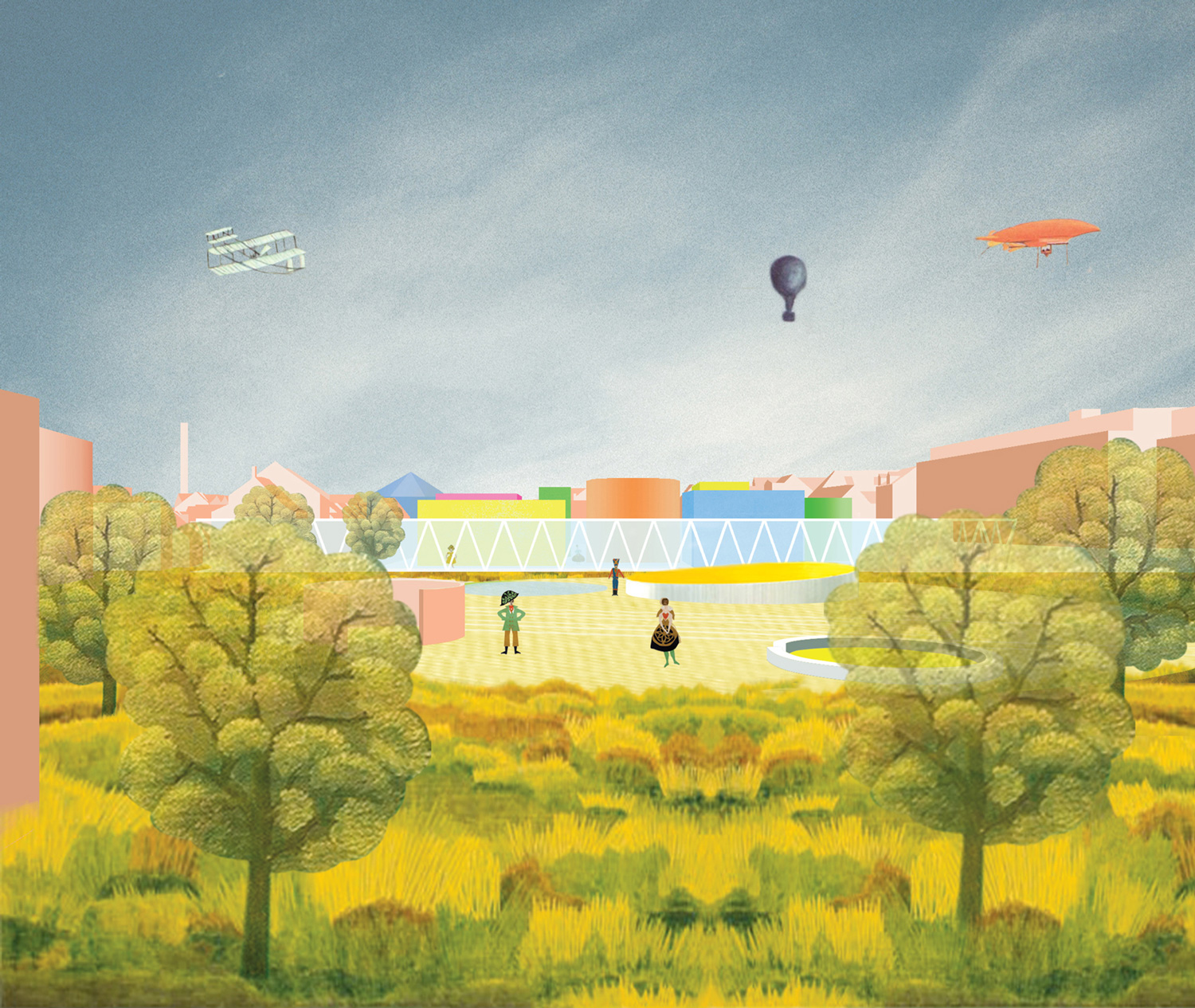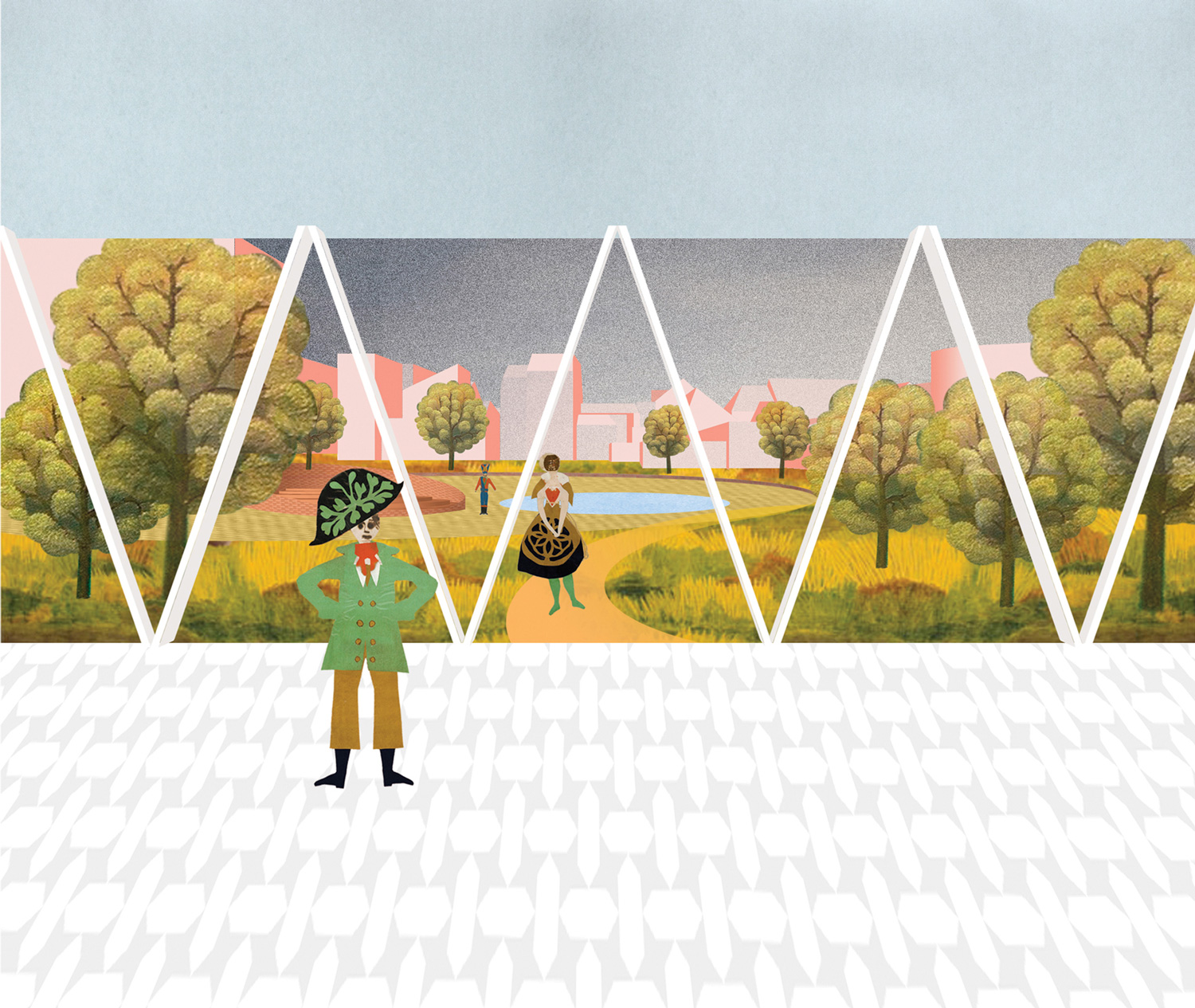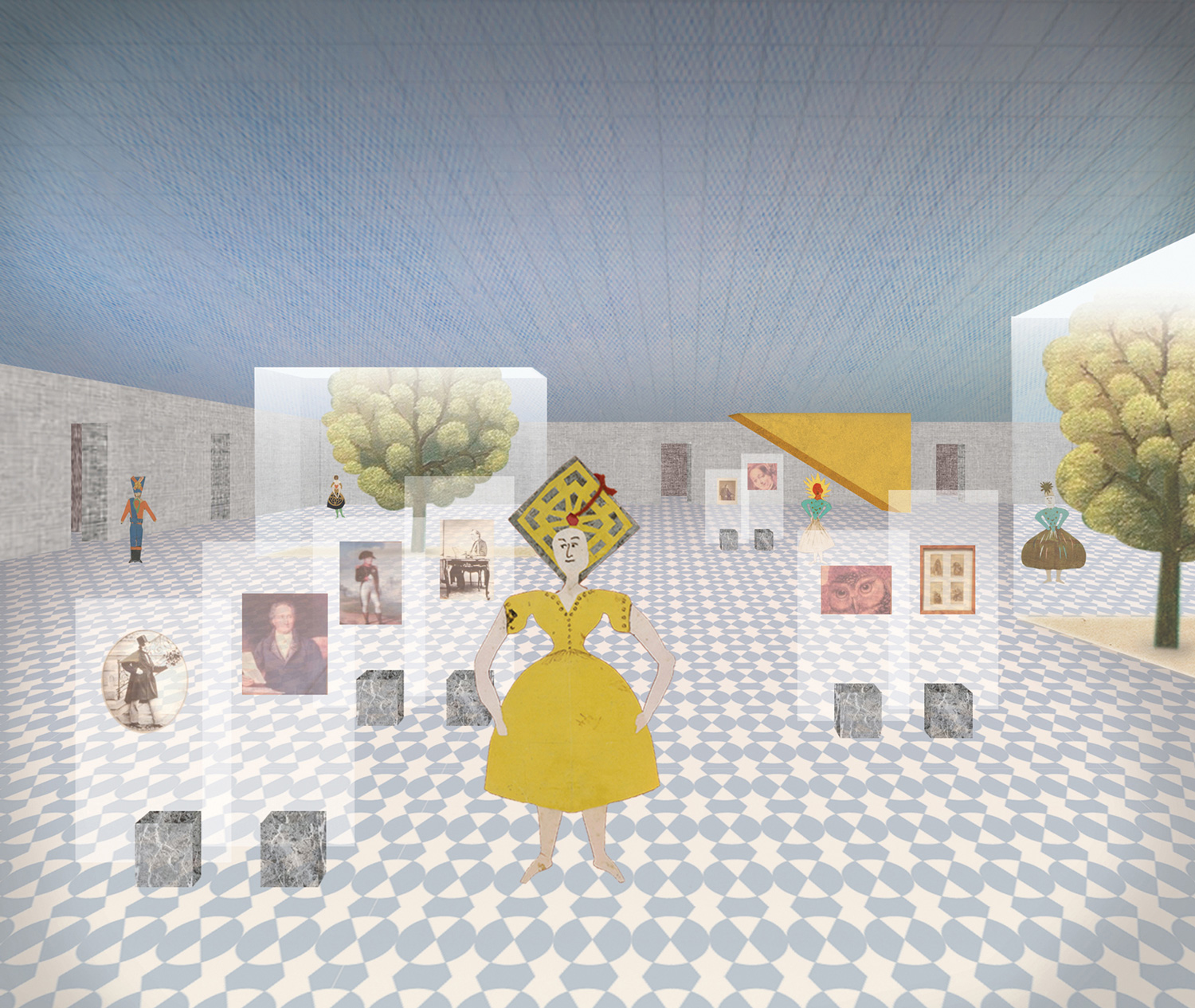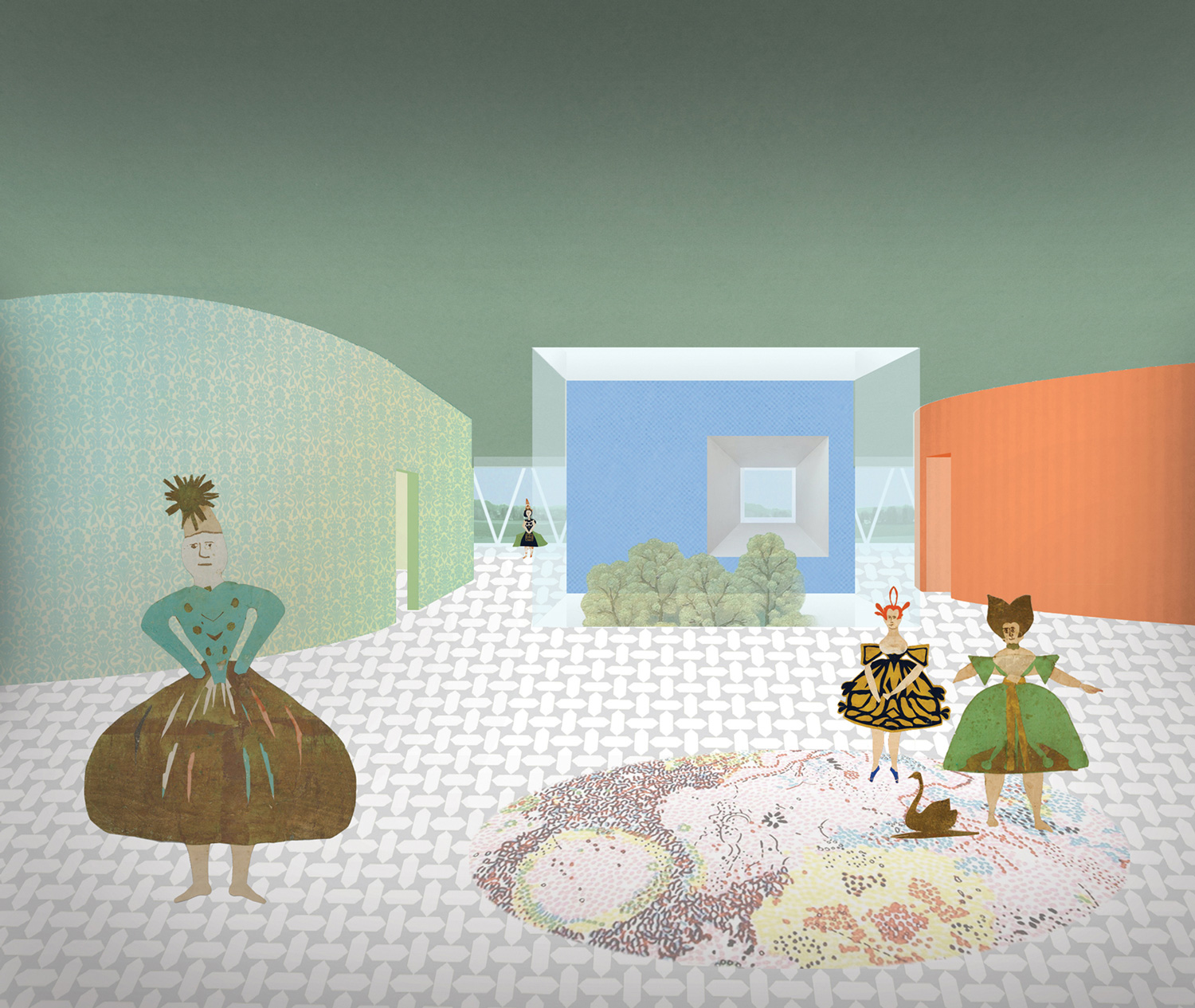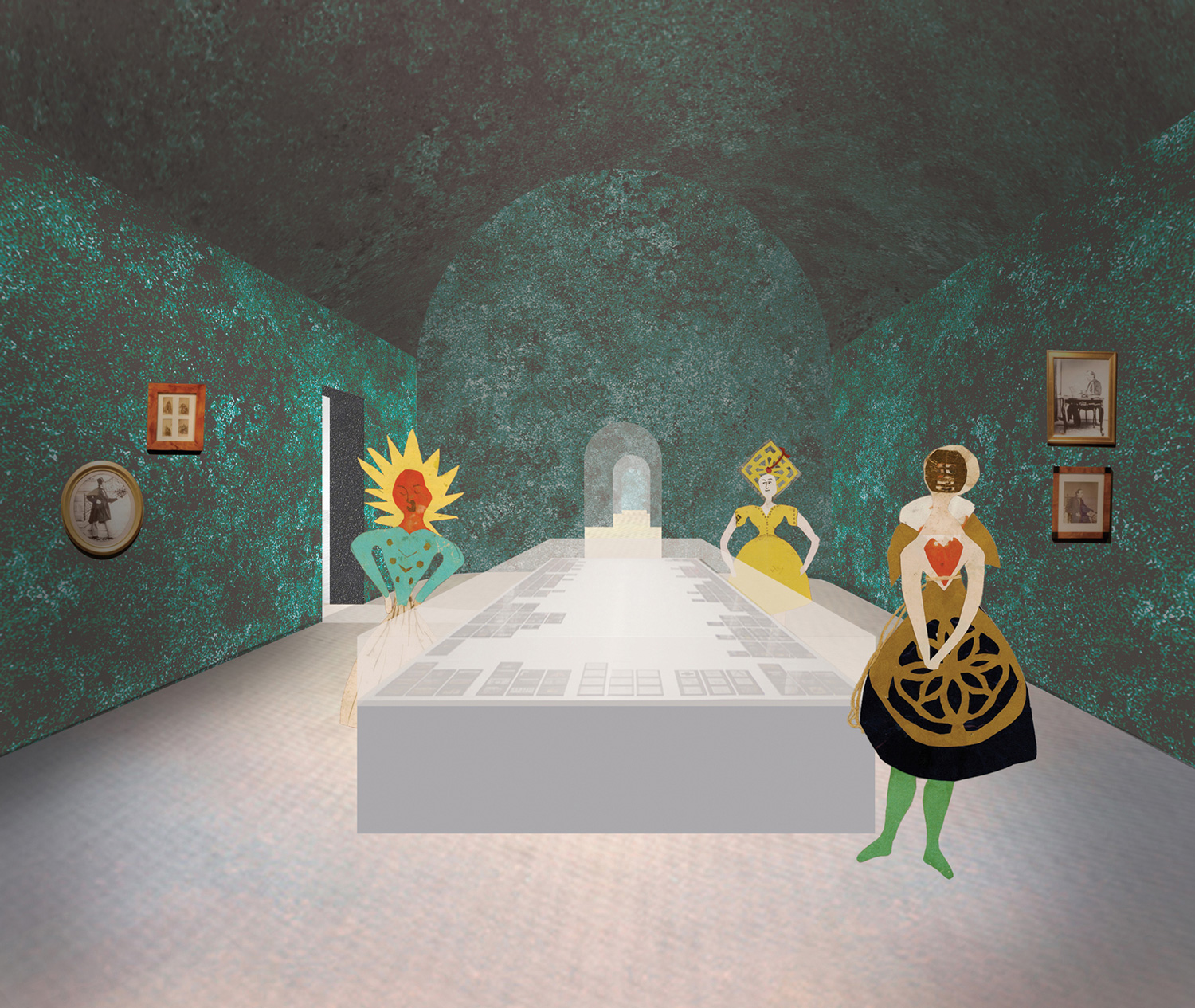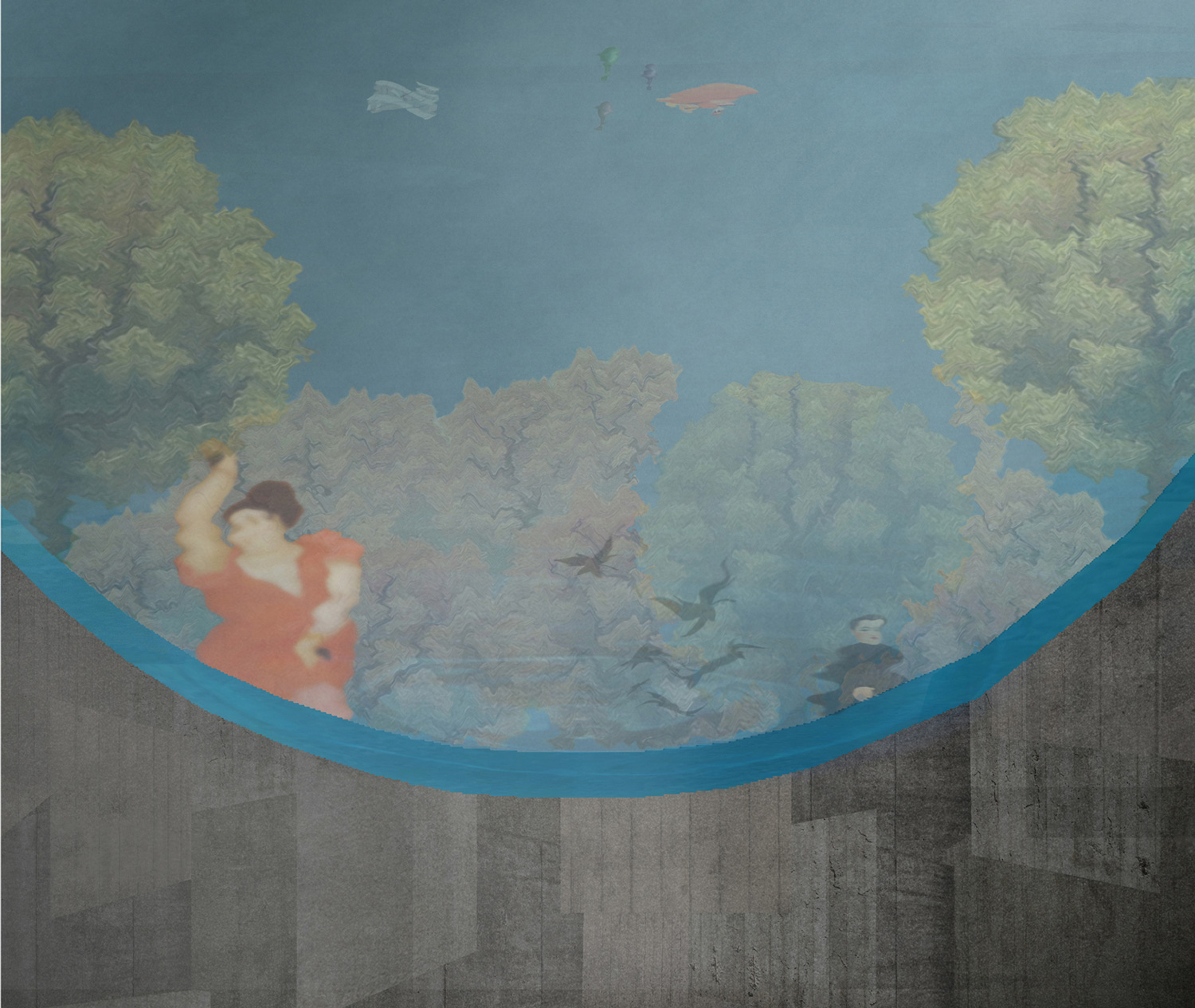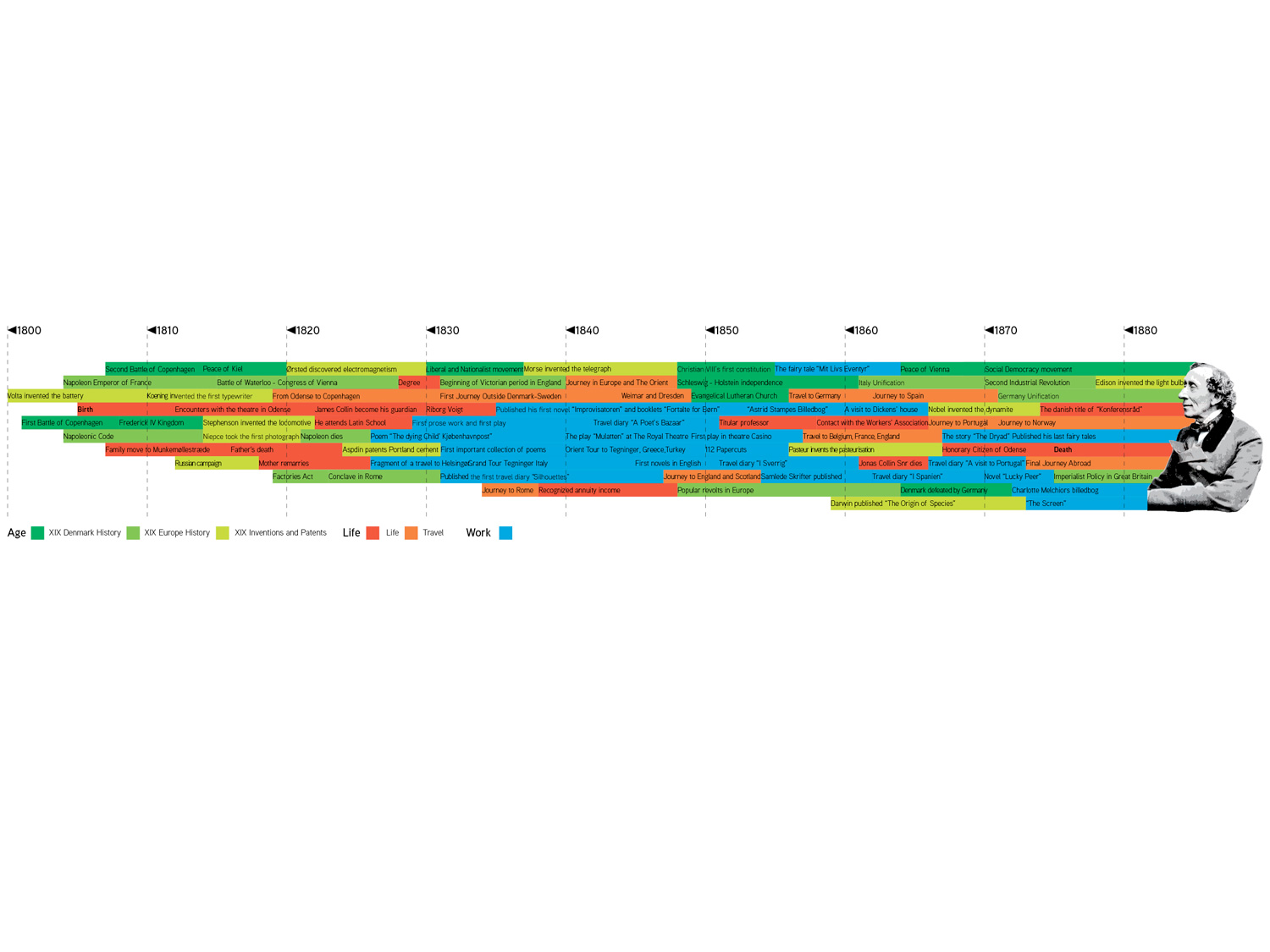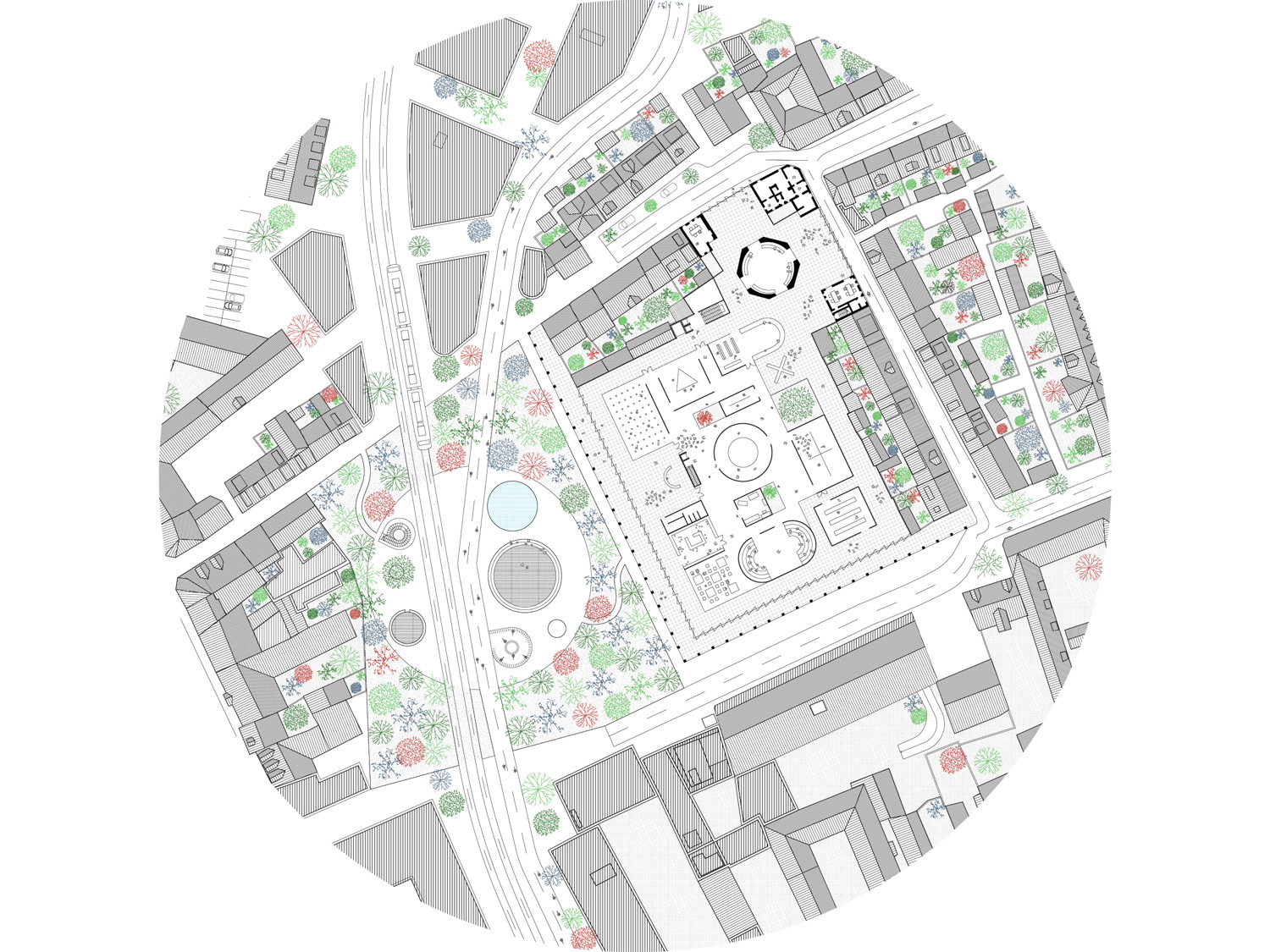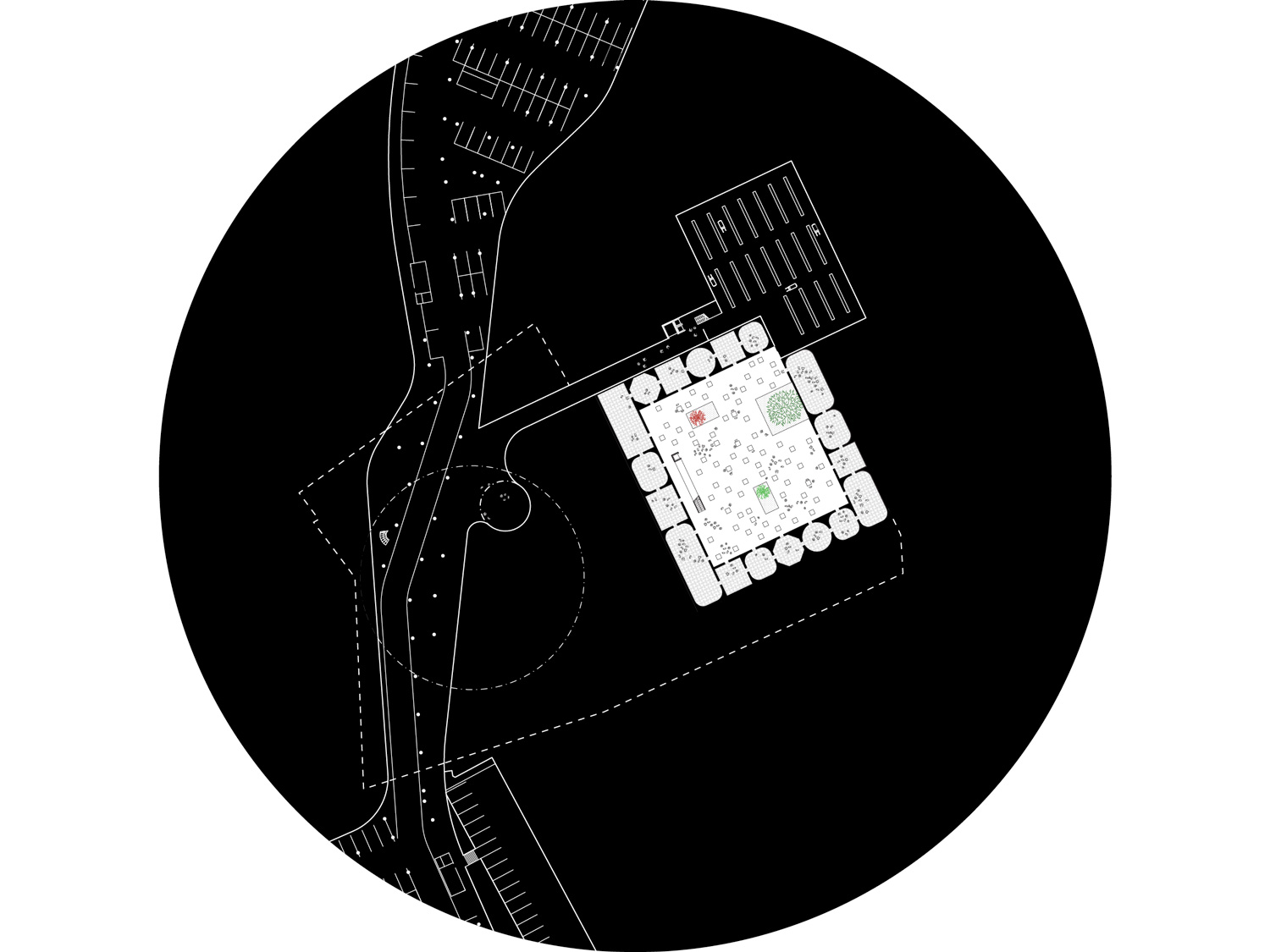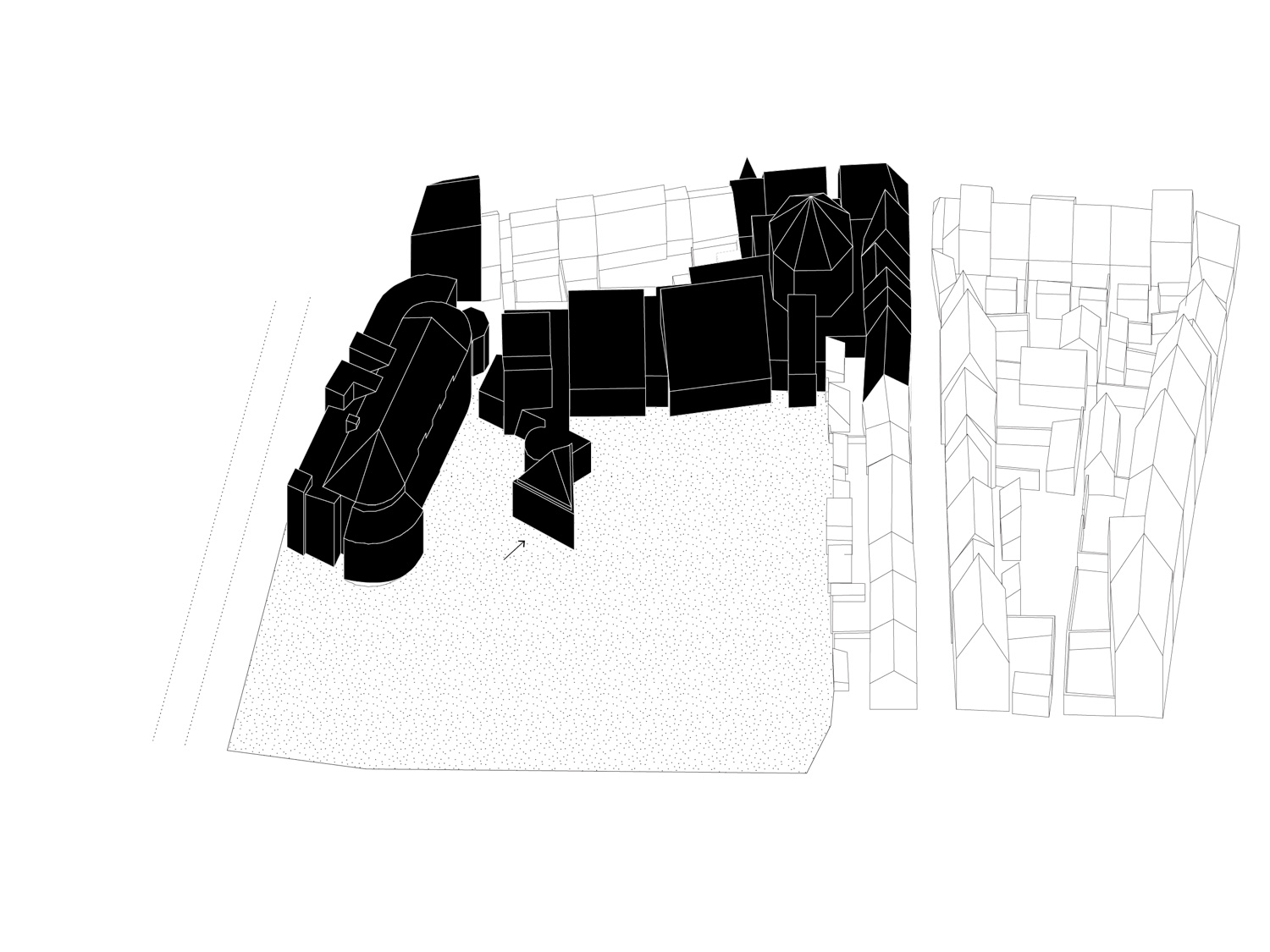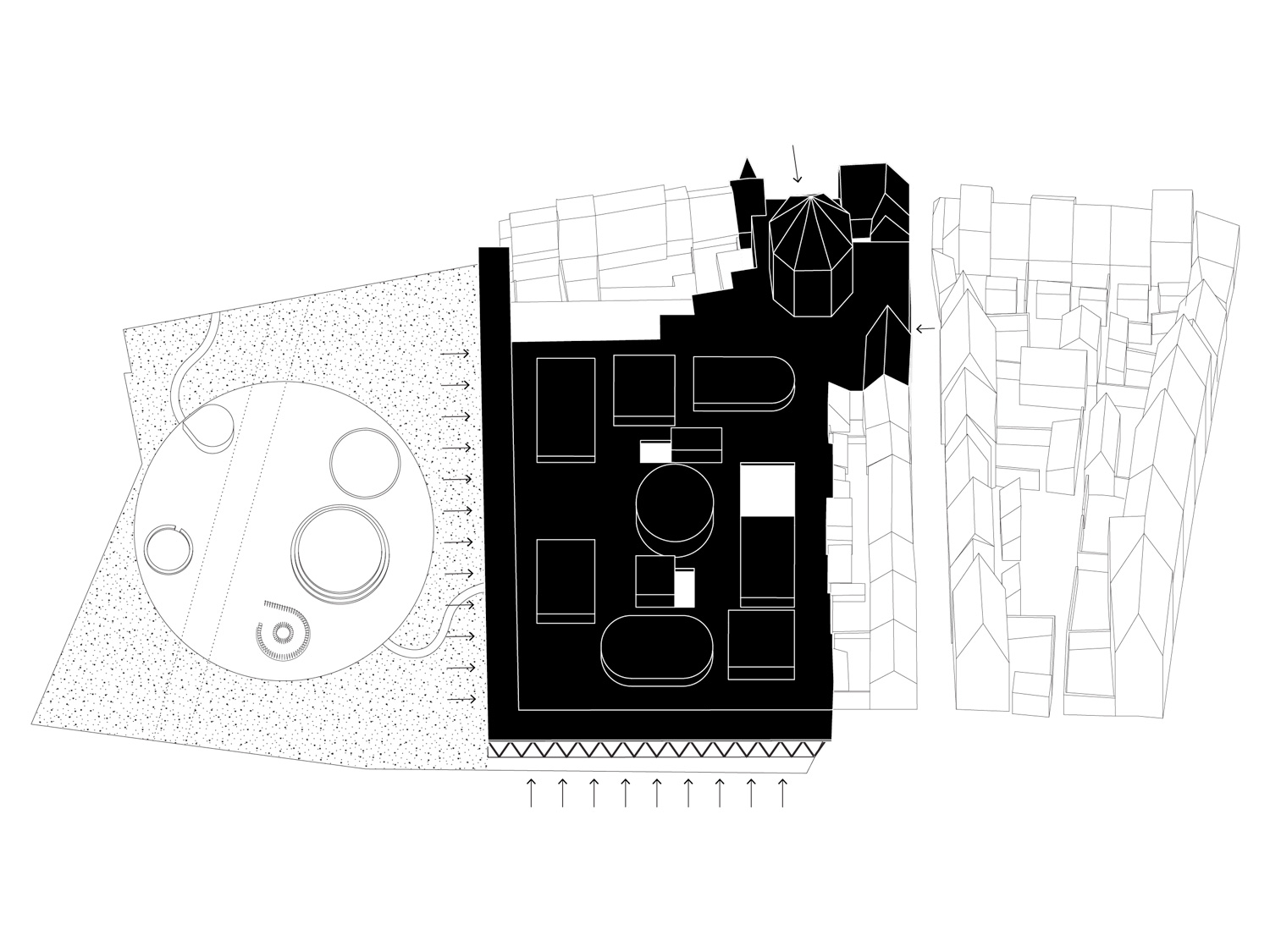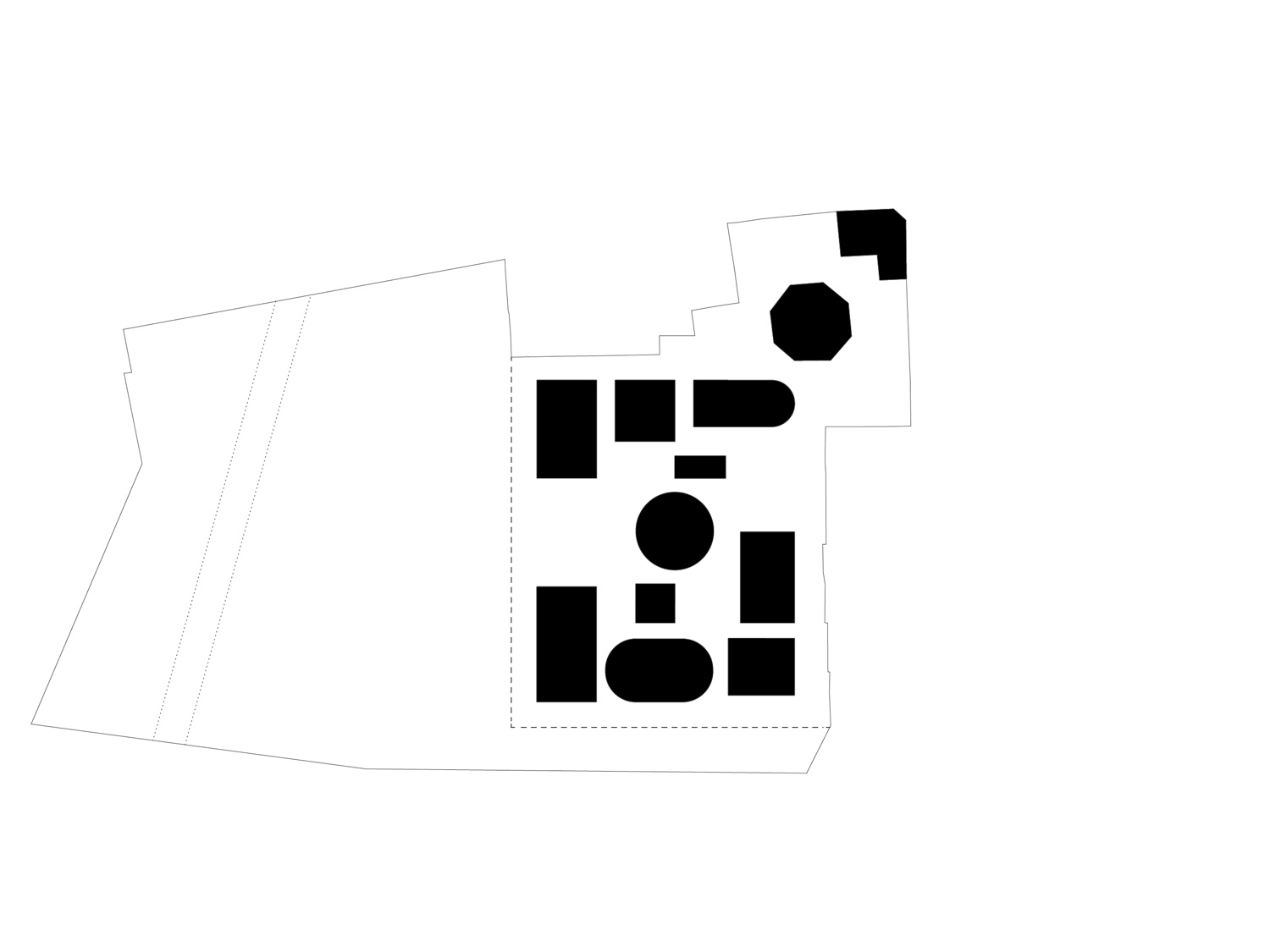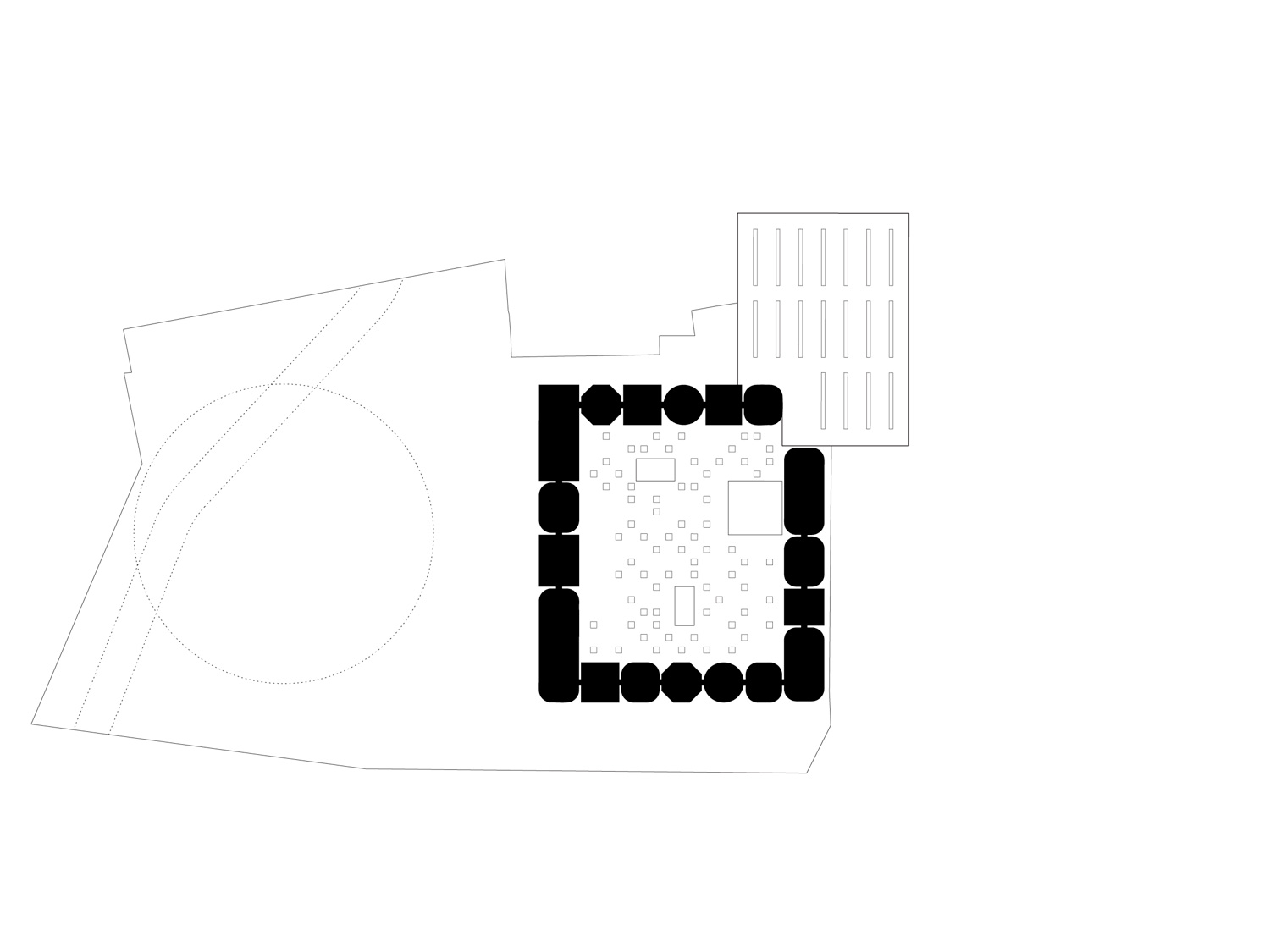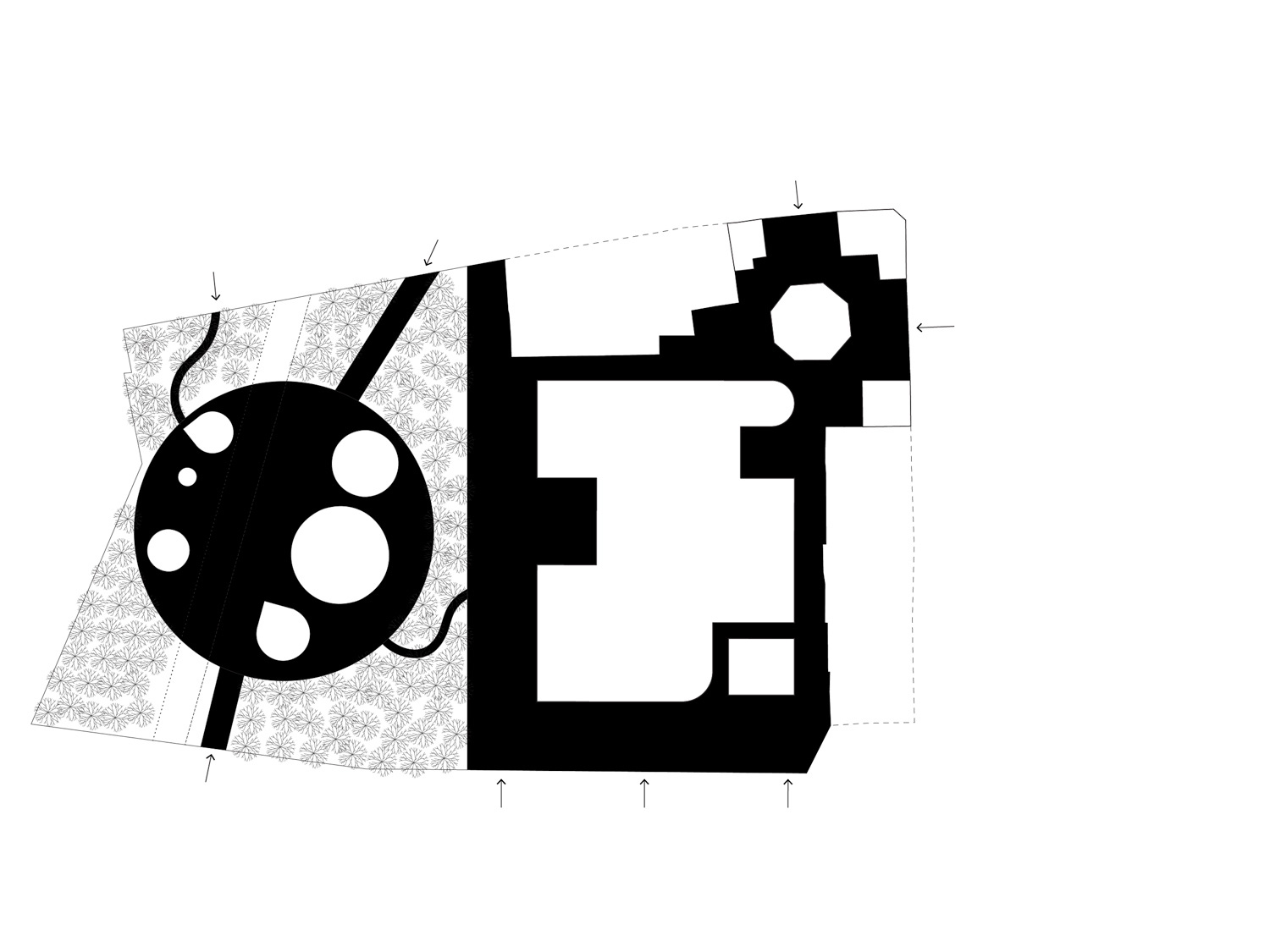1533-U67-DK-2013
Client: Hans Christian Andersen's House of Fairytales
Status: Competition (2013)
Location: Odense, Denmark
Coordinates: 55.398092, 10.390554
Climate: Continental, Temperate
Material: Undefined
Environments: Old town, Park
Visualizer: Studio
Scale: 6.500 ㎡ Medium
Types: Cultural, Cultural center
The House of Fairytales, born from the combination of the Hans Christian Andersen Museum with the Tinderbox Cultural Centre into one building, deals with the aim of creating a complex experience that discovers infinite possibilities to involve people using either a direct or an indirect way to learn. Rebuilding a timeline of the XIX century helps the project to build a larger framework of knowledge for the visitors. Two way of learning are presented in two different storey.
The ground floor is conceived in a more direct way of learning, it’s the storey of the senses. Each function is contained in a different shape, where the volumes stands out from a common slab a new compact block in the urban fabric, where as in a shaped box toy for children, the “Putteboks”, the contents is revealed only from the inside of the building but everything is accessible and the visitors are totally involved as main actors, playing or acting. This storey is linked to the more superficial level in the comprehension of the Andersen’s works. On the opposite could be read the underground level.
Going down passing through a narrow stair is the first step to start going physically deep to an indirect level of knowledge. It’s no more the senses of the visitors that are stimulated but their intellects. The main room is dedicated to the Andersen’s works and it’s surrounded by a chain of different rooms showing an in-depth research on life and historic issues. Each step of the visitor is a choice and each could build a personal mental map of Andersen. This storey is linked to more deep level of comprehension. Going out from the building, a porch guides the visitor towards the Garden of Fairytales where the definition of a natural buffer that contains a common ground with different room of experience could be found. A green lung of several trees’ essence defines a space as a whole, a Magic Wood, where the inner room is discovered only going through it.
Within the 2020 an integrated land use and transport strategy for the city of Odense will be developed. The goal is to make the city become a new leading centre in South Denmark for knowledge and employment. The proposal for the House of Fairytales is rooted in this framework of high transformation of the city keeping moreover a strong vision in the desire to build a coherent connection with the historic city centre.
The urban value of this new building has to be considered as a point of departure, define a clear concept able to works with the definition of a new compact block in the urban fabric with a strong identity going beyond the existing fragmented shape and the actual contrast between a frontside towards the streets and a backside towards the Lotze’s Garden.
In order to achieve this aim the first step is to demolish all the existing building, freeing the ones that have to be preserved as single volumes in the space, and build a new block around following the line of the historic fabric of the plot. The new block will be porous on all the four facing side. From outside this semi-public space is seen as a one-storey height building, a slab with the same scale of the historic urban fabric. Its glazing façade will reflect the high level of permeability where all the flows to or from the historic urban centre and to or from the new development “cityscape” will be channelled. The connection with the underground level of parking; the flows of visitors coming from the tourist bus parking in the east, the one coming from the light rail stops in the south or in the north and the one from the station of Odense situated in the west.
It will become a new hub for the city, a buffer that could receive visitors and offer them rest and warm before starting a guided visit inside or simply it could be crossed in every directions by the citizens.
This spatial filter will work also as a common ground for the inside, service and common facilities like the cafè and the shop will be situated there. The Memorial Hall, the Birthplace of Hans Christian Andersen, the two adjacent Townhouses and the House of Fairytales will have their main access in this space giving an high value to the new building, making it a single attraction of international standing. The single volumes will stand out from the section of this slab as in a shaped box toy for children, the “Putteboks”, revealing their contents only from the inside of the building.
The House of Fairytales is born from the need of combination of the Hans Christian Andersen Museum with the Tinderbox Cultural Centre into one building. The proposal starts from the dimension and contents of the actual spaces, achieving 6000 sqm adding different layers of knowledge and new occasions to deepen several topics for different age visitors.
The actual division of the program is divided into 5 main categories: Age, Life, Works, Experience and Facilities. Rebuilding a synoptic timeline of the XIX century the project deeps some of these classes trying to build a larger framework for the visitors, a single and simultaneous narrative showing moments of chronological coincidence, autonomy, influence and convergence. The aim is to achieve a physical structure of information, starting also from the rich database available in internet, making it easily accessible. But also create a complex experience discovering infinite possibilities to involve people using either a direct or indirect way to learn. For this reason the House of Fairytales is physically divided into two storey that are referred to these two different way of learning, with senses or with intellect. It creates the opportunity for multiple paths, manifold interpretations and cross-curatorial exhibits within a single entity.
The ground floor is conceived in a more direct way of learning, it’s the storey of the sense. To learn the visitor has to react someway. Each function is contained in a different shape, but everything is accessible and the visitors are totally involved as main actors, playing or acting.
The Experience category in this storey is enriched and enlarged giving the opportunity to have more space to provide different space for the exhibition of the fairytales in the same time, some space of education where little frontal lesson could be organised and a space where the reading of the Andersen’s texts could be done alone in a silent place detached from the rest. Even his Birthplace, the Memorial Hall and the Nyhavn room could be considered occasion of experience. Everything is taught and learned directly, using different methods where even the new technology could help in this aim. This storey is linked to the more superficial level in the comprehension of the Andersen’s works, it’s mainly directed to the children and highly referred to the interaction between people and physical space.
On the opposite could be read the underground level. Going under passing throw a narrow stair is a first step to start going physically deep towards others level of knowledge. From the direct experience of the fairytales to an indirect level of knowledge. It’s no more the senses of the visitors that are stimulated but their intellects. Arriving down a dark room receive the visitors only three gardens bring some natural light in the space, and the relation between shadows and lights is physically approached like a path backwards in the Andersen existence.
Three category are presented following an hidden timeline.
The main room is dedicated to the Andersen’ works and it’s surrounded by a chain of different rooms showing an in-depth research in a very intimate way. The Works category is divided into Writings, Drawings and Travel Account, giving a strong importance to his 30 travels around Europe. While in the rooms the Life of Andersen and his Age could be deepen. The Age is presented into Europe and Denmark history, Main historic topic and Inventions and Patents of the XIX century. To build a deep knowledge framework it’s important that the visitors understand the context in which Andersen lived and how he saw the world changing fast. Just to think that the locomotive was invented in his childhood while the first car few years after his death.
It’s only the visitors’ curiosity that lead them in entering one of these rooms or crossing all of them in circle. It’s the need of going deeper and deeper in the knowledge process that guided them. Each step is a choice and each visitor could build a personal mental map of Andersen.
This storey is linked to a more rich level in the comprehension of the Andersen’s works, it’s mainly directed to the adults but even children could visit it following different path of knowledge.
Going out from the building passing through the buffer, a porch is the physical edge between the indoor and the outdoor space that guides the visitor towards the Garden of Fairytales. From an urban scale this could be considered as a chance to knot together two systems: the north-south new development of the “cityscape” project and the east – west historic urban fabric. The Lotze’s Garden with the new surface of quite 5000 sqm, it’s no more a private secret garden but a public space open to the city. The relation with the House of Fairytales is conceptual, the definition of a buffer that contain a common ground with different room of experience could be found even outdoor.
The common buffer is a green lung of several trees’ essence that defines the space as a whole, a Magic Wood, where the inner room is discovered only going through it. The surprise and the unexpected are the main features of this space. The light rail, drawing on the grass, and the bike path crosses the Magic Wood passing through the main room where others shapes could be seen: a pool of water that brings light to the underground corridors surprise the visitor in a game of layering; a podium for some little summer lessons; a sand box for the children; a parking for the bikes and the service entrance to the parking underground.
“[I said] that my text were as much for adults and as for children, who only understood the ornamentation, and only as mature people could they see and sense the whole. Lucky them!”
